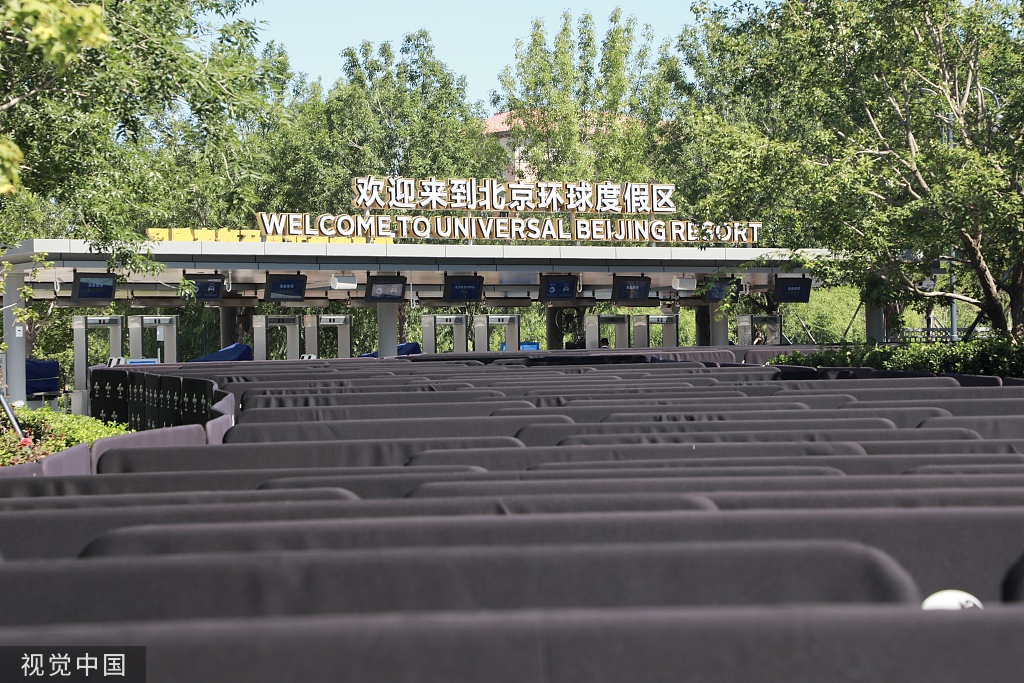World Cultural Heritage of Beijing
Since the 1970s, UNESCO World Heritage Committee has recognized over 800 sites of particular cultural, scientific, or historical significance around the world. With its rich culture and long history, China is the country with the second largest number of these precious locales. In particular, 7 UNESCO World Heritage Sites can be found in Beijing, the capital city of China.
The Palace Museum
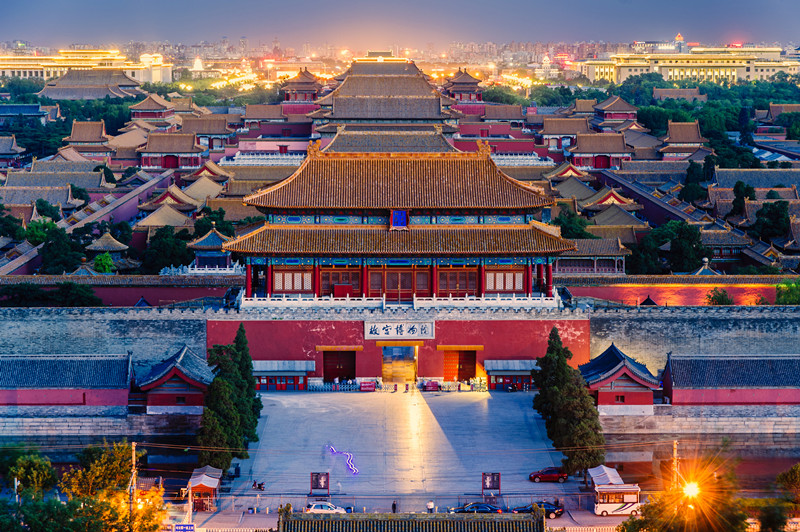
The Palace Museum [Photo via tuchong.com]
Established in 1925, the Palace Museum is located in the imperial palace of the consecutive Ming (1368-1644) and Qing (1644-1911) dynasties. The magnificent architectural complex, also known as the Forbidden City, and the vast holdings of paintings, calligraphy, ceramics, and antiquities of the imperial collections make it one of the most prestigious museums in China and the world. In 1961, the State Council designated the former imperial residence as one of China's foremost-protected cultural heritage sites, and in 1987 it was listed as a UNESCO World Heritage site.
The Forbidden City is surrounded by 10-metre-high walls and a 52-metre-wide moat. Measuring 961 meters from north to south and 753 meters from east to west, the complex covers an area of 1,120,000 square meters. Each side of the rectangular city has a gate. These four gates are the Meridian Gate (Wu men) on the south, the Gate of Divine Prowess (Shenwu men) on the north, and the East and West Prosperity Gates (Donghua men and Xihua men), respectively. Entering from the south, visitors will see a succession of halls and palaces spreading out on either side of the central axis. The glowing yellow roofs of the stately buildings seem to levitate above the vermilion walls. This magnificent sight is amplified by the painted ridges and carved beams of the ancient structures.
Zhoukoudian Site
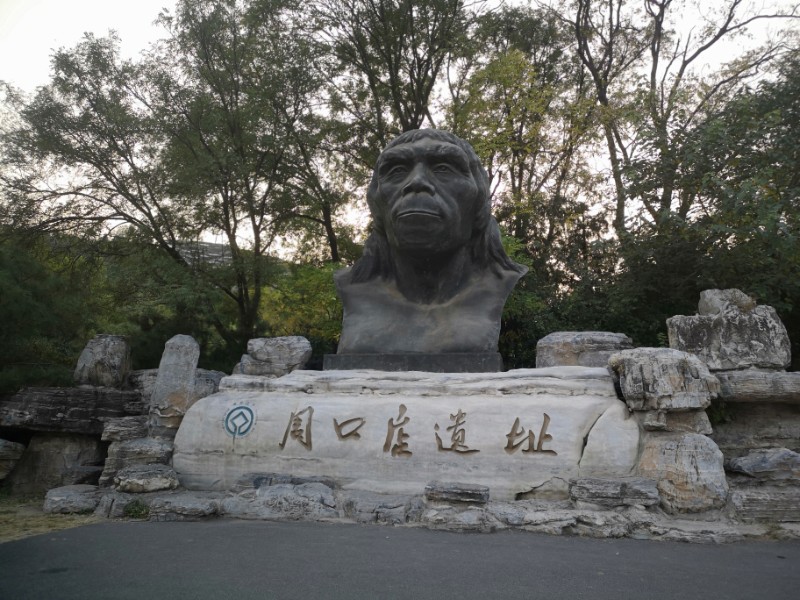
Zhoukoudian Site [Photo by tuchong.com]
Zhoukoudian is situated some 50 kilometers to the southwest of the urban district of Beijing, where the world-famous Peking Man lived about half million years ago.
Zhoukoudian Site was put on the list of sites to be protected for their historical and cultural value at national level by the State Council in 1961. It was inscribed on the World Heritage List by the UNESCO in 1987.
More than twenty localities have been found at Zhoukoudian, such as Peking Man Cave, Upper Cave and New Cave. The discoveries of human and other animal fossils, man-made stone tools, and the evidence of fire using astonished the world in the 20th century. Peking Man Site is not only the treasure house of human fossils, but also the research base for paleoanthropology, prehistoric archeology, paleontology, stratigraphy, chronology and petrology.
The Great Wall
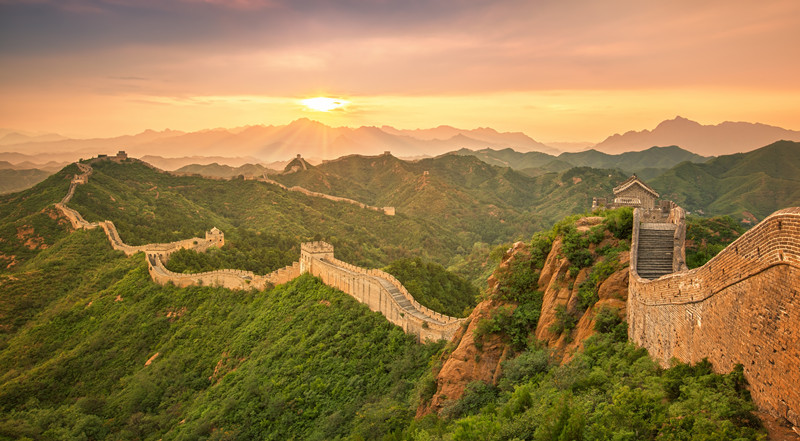
The Great Wall [Photo via tuchong.com]
The Great Wall was continuously built from the 3rd century BC to the 17th century AD on the northern border of the country as the great military defence project of successive Chinese Empires, with a total length of more than 20,000 kilometers. Its historic and strategic importance is matched only by its architectural significance. The Great Wall begins in the east at Shanhaiguan in Hebei province and ends at Jiayuguan in Gansu province to the west. Its main body consists of walls, horse tracks, watch towers, and shelters on the wall, and includes fortresses and passes along the Wall.
The Great Wall reflects collision and exchanges between agricultural civilizations and nomadic civilizations in ancient China. It provides significant physical evidence of the far-sighted political strategic thinking and mighty military and national defence forces of central empires in ancient China, and is an outstanding example of the superb military architecture, technology and art of ancient China. It embodies unparalleled significance as the national symbol for safeguarding the security of the country and its people.
Temple of Heaven
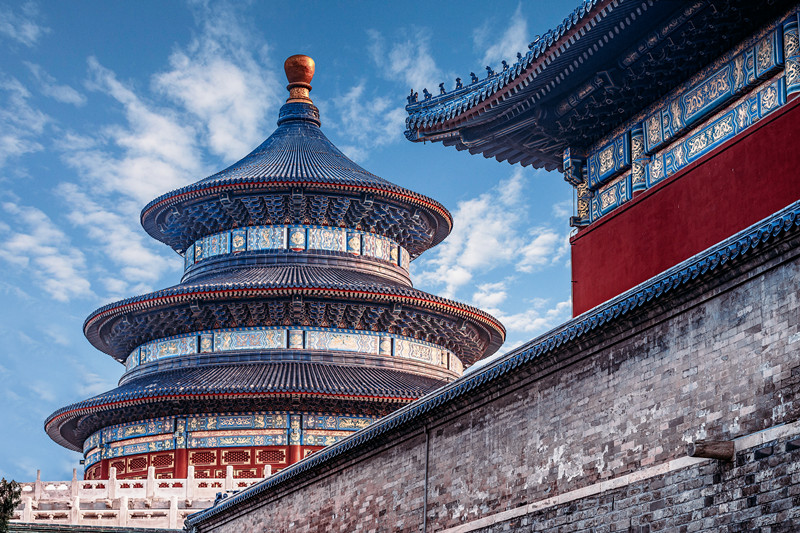
Temple of Heaven [Photo via tuchong.com]
Tiantan Park is the seat of the Temple of Heaven in the Ming and Qing Dynasties (1368-1911). Temple of Heaven was visited by the Emperors of the Ming and Qing dynasties for annual ceremonies of prayer to Heaven for good harvest and rain. It is an ancient complex which is the world's existing largest and most perfect formed for Chinese heaven worship.
The Temple comprises the Circular Mound Altar and Altar of Prayer for Good Harvest, divided by two enclosed walls into inner part and outer part with both square in the south and round in the north. Worship building concentrated in the inner altar, the inner altar on all sides of doors. The axis connecting the two altars is a brick masonry platform that is 360 meters long, 28 meters wide and 2.5 meters high, it is also known as "the Sacred Way" or "Sea Coat Avenue". It is also called The "Vermilion Steps Bridge" which symbolizes the long way to heaven.
The Summer Palace

The Summer Palace [Photo via tuchong.com]
The Summer Palace is a vast ensemble of lakes, gardens and palaces in Beijing. Mainly dominated by Longevity Hill and Kunming Lake, it covers an expanse of 2.9 square kilometers, three-quarters of which is water. In December 1998, UNESCO included the Summer Palace on its World Heritage List. It declared the Summer Palace "a masterpiece of Chinese landscape garden design. The natural landscape of hills and open water is combined with artificial features such as pavilions, halls, palaces, temples and bridges to form a harmonious ensemble of outstanding aesthetic value".
Located in the northwest outskirts of Beijing, 15 kilometers from the city, the Summer Palace is originally named "Qingyi Yuan" (Gardens of Clear Ripples). Based on the scenery of West Lake as the chief source, the garden absorbs the design method as well as the artistic conception of traditional southern Chinese garden. It gets the reputation of the "museum of the royal garden". The Summer Palace, originally named Qingyi Yuan or the Garden of Clear Ripples, is the largest existing and the best-preserved royal garden in China. In the Qing Dynasty, it was one of the "Three Hills and Five Gardens" in the western suburbs of Beijing.
Imperial Tombs of the Ming and Qing Dynasties
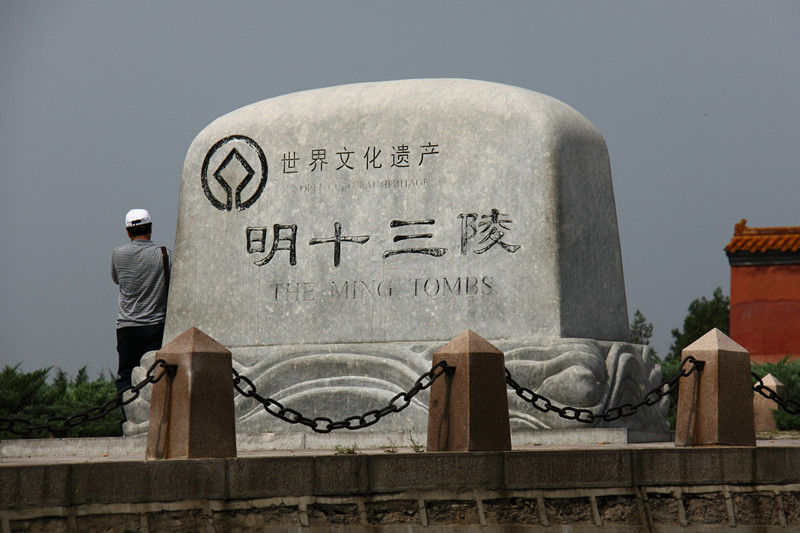
Imperial Tombs of the Ming and Qing Dynasties [Photo via tuchong.com]
The Ming and Qing imperial tombs are natural sites modified by human influence, carefully chosen according to the principles of geomancy (Fengshui) to house numerous buildings of traditional architectural design and decoration. They illustrate the continuity over five centuries of a world view and concept of power specific to feudal China.
The Ming Dynasty (1368-1644) Xian Tomb is the burial site for Prince Xingxian and his wife, parents of Emperor Jiajing (reigned 1522-1566). They were buried together at Mt. Songlin in present Zhongxiang County, Hubei Province.
The Dong Tombs of the Qing Dynasty (1644-1911), the first imperial tombs established by the Manchu rulers, are located 125 kilometers east of Beijing in Zunhua County, Hebei, and occupy an area of 2,500 square kilometers. The Xi Tombs of the Qing Dynasty are located among the mountains some 100 kilometers west of Beijing. This site is smaller than that of the Dong Tombs and with fewer emperors and empresses buried.
The Grand Canal

The Grand Canal [Photo via tuchong.com]
The Grand Canal is a vast waterway system in the north-eastern and central-eastern plains of China, running from Beijing in the north to Zhejiang province in the south. Constructed in sections from the 5th century BC onwards, it was conceived as a unified means of communication for the Empire for the first time in the 7th century AD (Sui dynasty). This led to a series of gigantic construction sites, creating the world's largest and most extensive civil engineering project prior to the Industrial Revolution.
It formed the backbone of the Empire's inland communication system, transporting grain and strategic raw materials, and supplying rice to feed the population. By the 13th century it consisted of more than 2,000 kilometers of artificial waterways, linking five of China's main river basins. It has played an important role in ensuring the country's economic prosperity and stability and is still in use today as a major means of communication.


